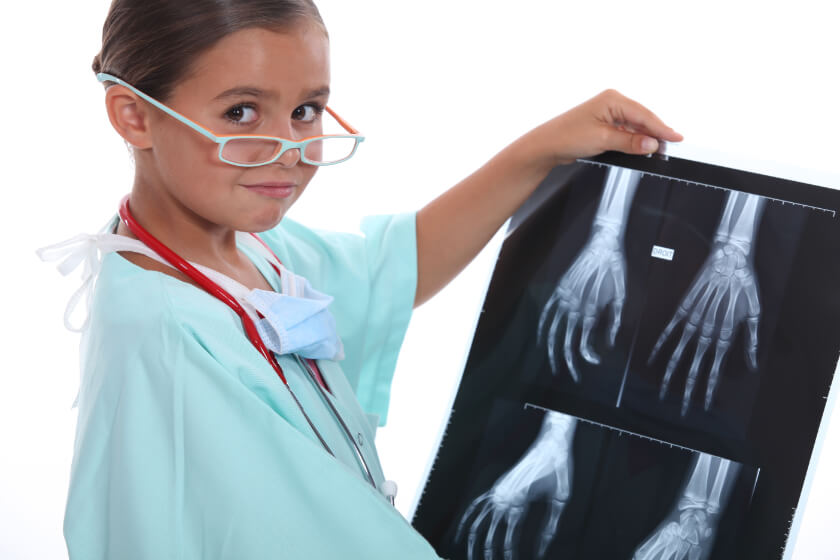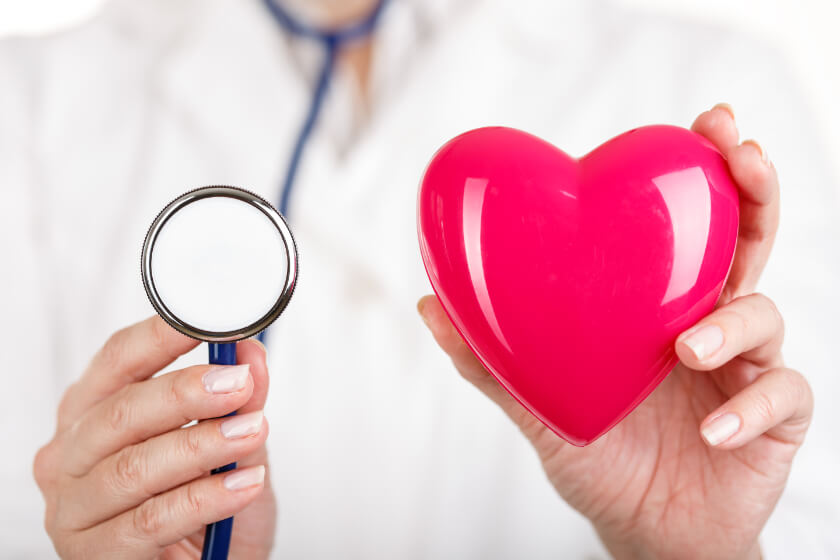
How do Bones Grow?

Kids grow up so fast. In fact, a baby grows about 10″ in the first year of life and grows several inches each year after that, especially during puberty. All of this growth is due to growing bones.
But how exactly do bones grow?
Babies are born with about 300 bones, and full-grown adults have only 206. Babies have tiny bones compared with adults, of course. As they grow, many of these bones fuse together to create larger bones. Their bones continue to grow until they reach their mid-20s, when bones are as large as they will ever be.
Bones go through a number of changes as they grow. When babies are born, their bones are mostly cartilage, which is a soft and flexible substance. As babies grow, the cartilage in their bones grows. Over time and with a little help from calcium, bone replaces cartilage in a process known as ossification. Simply put, ossification is a process in which bone replaces cartilage.
During ossification, layers of calcium and phosphate salts accumulate on and encase the cartilage cells. In time, the encased cartilage cells die. As they die, the cartilage cells leave behind tiny pockets in the bone. Blood vessels grow into these pockets and deposit specialized cells, known as osteoblasts, into the empty spaces.
Osteoblasts perform a number of functions that help bones grow. These cells help to collect calcium into the pockets, which helps encase even more cartilage cells. Osteoblasts also produce a substance that is rich in collagen fibers that help create the structure of bone.
When the osteoblasts finish building new bone, they become flat and resemble pancakes. These flattened cells line the surface of the bone and regulate how much calcium passes into and out of the bone. Keeping the right amounts of calcium and other minerals in bone is important to maintaining strong bones; low calcium levels decreases bone density, which increases the risk of bone fractures.
Bones Grow from the Ends
Newborn babies have large amounts of cartilage in their bones, particularly at the ends of the bones in areas known as “growth plates.” In long bones, such as those in the arms and legs, the ossification of turning cartilage to bone begins in the center of the bones and continues towards the ends so that the bones grow in length. The cartilage continues to grow as the bones grow. The presence of a growth plate indicates that the bone is still growing.
The ossification process is typically complete by the time a person reaches his or her mid-20s, when their bones are as long as they will ever be.
What Happens When Bones Stop Growing?
Bone continues to change over the course of a person’s lifetime. While they do not grow longer, for example, bones can become thicker during adulthood. Bone thickening is often in response to increased muscle activity, such as weight training. Bones can also heal and repair themselves.
After bones stop getting longer, they continue to produce new bone tissue to replace old bone tissue. In fact, the adult body replaces its skeleton every 7 to 10 years. Bones contain living tissue that renews itself regularly in a process known as bone turnover. The process happens in two stages. First, osteoblasts draw calcium from the bloodstream to build new bones. Next, cells known as osteoclasts dissolve the bone and return the calcium to the bloodstream.
Bone turnover continues throughout life, but the process slows down with age. During childhood through the teen years, the body adds new bone more quickly than it removes old bone, which helps to build bone mass. After the age of about 20, the body adds new bone more slowly. Eventually, the body removes old bone more than quickly than it adds bones, which causes us to lose bone mass.
Use of Radiology in Evaluating Bone Growth and Overall Bone Health
When it comes to bone growth, fractures, and overall bone health, doctors use radiology in a number of ways. A radiologist can use x-rays to look for a broken bone, for example, and bone scans to detect diseases and tumors that affect bones. X-rays are also helpful in bone age studies, in which the radiologist looks at x-ray images of the growing plates of a child’s left hand to estimate the maturity of a child’s skeletal system.
A radiologist can also perform densitometry to measure calcium and evaluate the density of a patient’s bone. This test is helpful in the diagnosis of osteoporosis and the prediction of bone fractures. Musculoskeletal MRI (magnetic resonance imaging) and musculoskeletal ultrasound tests can help doctors diagnose and manage arthritis and other conditions affecting the bones.
For more information on how bones grow, consult with a pediatrician or radiology professional.




